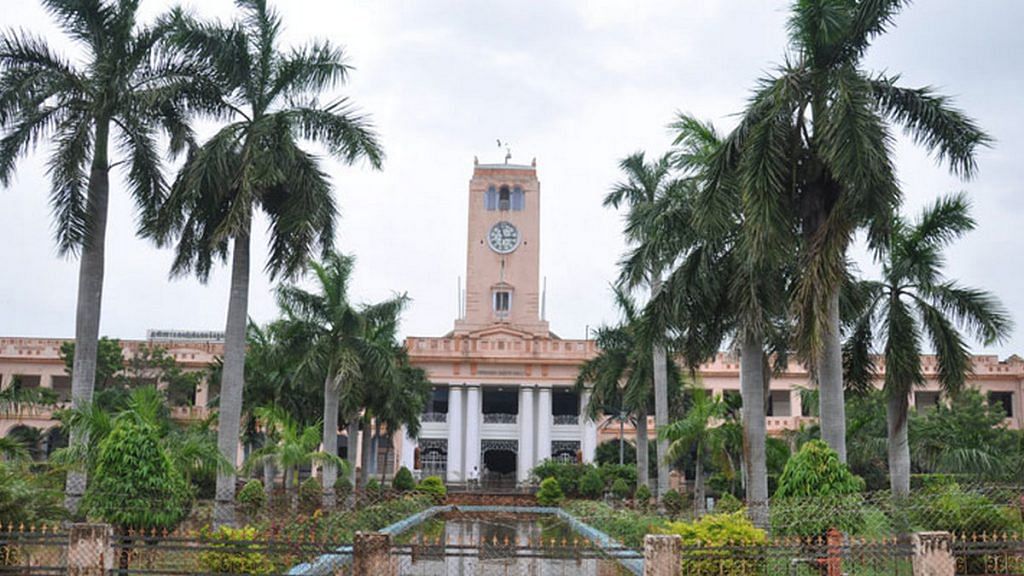New Delhi: The Annamalai University in Tamil Nadu finds itself in hot water after it was revealed that over 200 papers published by researchers under its auspices had been manipulated.
Microbiologist and image manipulation expert Elisabeth Bik tweeted that she had found evidence that authors had manipulated scientific images and plagiarised content in published papers, after receiving a tip-off about the university.
“I checked out a couple of papers, and found many of these to have image problems,” Bik told ThePrint. “I then followed up by checking out more papers by the same authors and kept on finding more problematic figures.”
Multiple kinds of fraud
Bik has discovered multiple kinds of fraud, right from image manipulation to plagiarism to fudging of data across the Annamalai papers she analysed. She penned the details in her blog.
The first and most prominent kind of deception she discovered was the manipulation of images, either by duplicating sections of an image or repeating the same images. There is duplication in images featuring animals as well. There are several instances where features in an image are duplicated multiple times within the same image.
Patterns in graphs also seemed problematic, according to Bik. Several papers containing different graphs showed similar patterns, both within the same paper and also across multiple papers. These included graphs even showing the same background noise, which is random and really cannot be replicated in different setups, let alone different experiments.
Bik also discovered instances of plagiarism — in one paper, there was little to no original text at all.
The 90-year-old Annamalai University is accredited ‘Grade A’ by the Indian National Assessment and Accreditation Council (NAAC). A vital criterion in retaining this grade is to publish a large number of research papers.
ThePrint reached NAAC for a comment, but there was no response.
K. VijayRaghavan, Principal Scientific Advisor to the Government of India, said, “My office will be bringing this to the attention of the chancellor of the university and to relevant funding agencies. This will happen in the next few days. We expect them to examine the matter speedily and correctly.”
Also read: Forget top 100 list, India doesn’t even have a mechanism to identify research universities
Vice-chancellor also implicated
Bik also dug into the vice-chancellor of the university, V. Murugesan.
“In this particular case at Annamalai, the research misconduct was very widespread, and also appear to have affected the current vice-chancellor, who is ultimately responsible for research conducted at his university,” Bik said.
Out of the papers where Murugesan is listed as author, at least 14 have image manipulation issues. In multiple instances, the same photo has been used in different papers, and there are also images which feature multiple duplications of the same pattern.
“I had little hope reporting the problematic papers knowing that he himself has authored several of those papers,” said Bik.
ThePrint also reached Murugesan for a comment, but there was no response.
Indian academia rife with fraud
This is not the first time instances of image manipulation in published research papers submitted by researchers from Indian universities have come to light. Earlier this year, over 33 research papers originating from the CSIR-Central Drug Research Institute (CSIR-CDRI), Lucknow, were flagged by scientists for having manipulated images.
Similarly, over 130 papers from CSIR-IITR, Lucknow, and at least 28 papers from CSIR-IICB were flagged for manipulation or duplications. Over 127 papers from Indian universities have been retracted since 2016. For many other papers, the mistakes have been corrected.
The incidents prompted Shekhar Mande, director general of CSIR, to constitute a committee to draft ‘Guidelines for Scientific Ethics and Research Integrity’. He had also assured that action would be taken against those found guilty of scientific misconduct.
The Indian Council of Medical Research’s (ICMR) Bioethics Unit at National Centre for Disease Informatics and Research, Bengaluru, also released a new policy on Research Integrity & Publication Ethics to “ensure highest professional and ethical standards in inception, conduct, reporting, reviewing, publication of research”.
But there is seemingly still a long way to go for Indian academia. Bik has found more problematic papers authored by Indian researchers, but not to the scale of the 200-plus papers from Annamalai University.
The Indian scientific community has been struggling in recent years to uphold its research integrity. Number of published research papers is an important criteria in the promotion of scientists in Indian universities, which prompt many to publish their research in dubious journals. In 2017, a report found that India was the top global contributor to research published in predatory journals.
Earlier this year, the University Grants Commission had derecognised thousands of journals that were found to be predatory, and published a fresh list of 800 reputed journals.
To discourage researchers from publishing in these paid journals, UGC had asked all universities and colleges in the country to appoint and promote faculty members on the basis of its new list of approved journals.
“I hope that the Indian government and universities realise that scientific misconduct is extremely harmful for the reputation of research done in India. There need to be strict rules at each university,” said Bik.
“I also hope there will be an overarching, independent organisation that can oversee research done at Indian universities, similar to the Office of Research Integrity in the USA,” she added.
Also read: Plagiarism, data manipulation hurting India’s research, govt panel raises alarm
